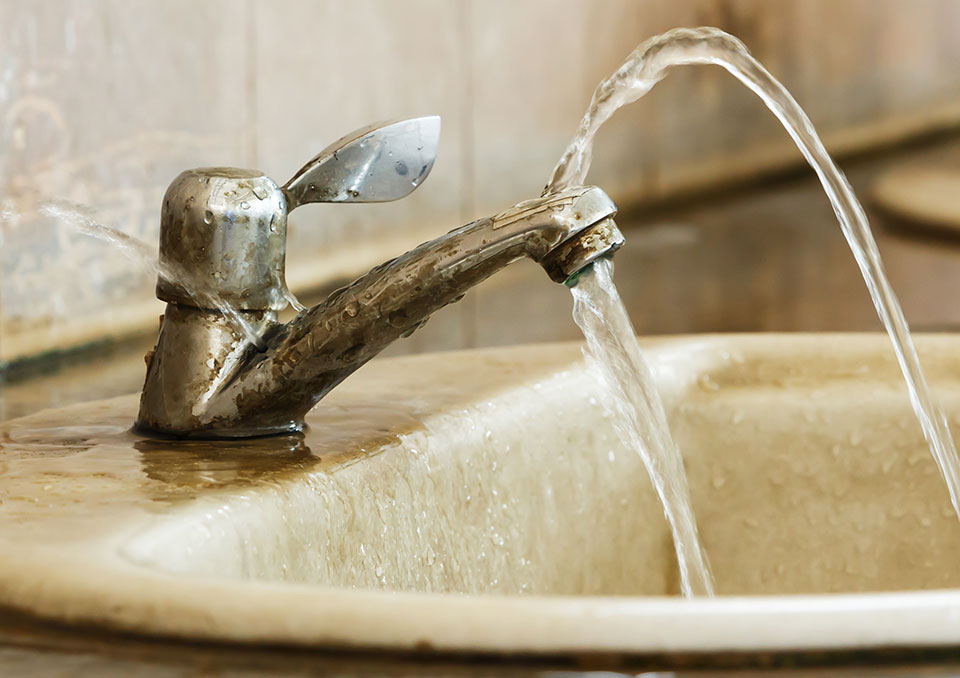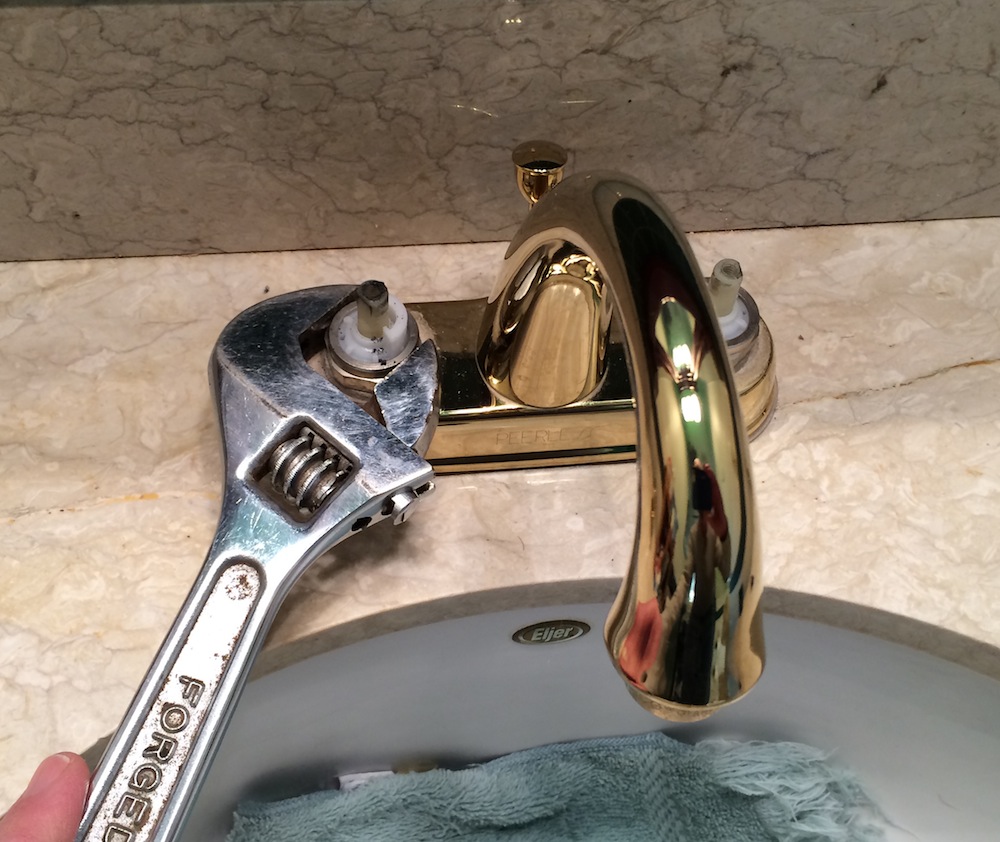Our Motives Behind Addressing a Leaking Faucet
Our Motives Behind Addressing a Leaking Faucet
Blog Article
We have noticed this article involving 4 Common Reasons for a Leaky Faucet down the page on the internet and accepted it made sense to relate it with you here.

Leaking faucets might feel like a small trouble, but their effect exceeds just the aggravation of the sound. From drainage to incurring unnecessary monetary prices and health and wellness risks, disregarding a trickling tap can result in numerous consequences. In this write-up, we'll delve into why it's essential to address this typical family issue promptly and successfully.
Wastage of Water
Ecological Impact
Leaking taps contribute substantially to water wastefulness. According to the Environmental Protection Agency (EPA), a single tap trickling at one drip per secondly can squander more than 3,000 gallons of water per year. This not only stress water sources but likewise influences environments and wildlife based on them.
Step-by-Step Guide to Dealing With a Dripping Faucet
Tools Needed
Prior to trying to take care of a trickling faucet, collect the essential devices, consisting of a flexible wrench, screwdrivers, substitute parts (such as washing machines or cartridges), and plumber's tape.
Common Faucet Issues and Their Solutions
Determine the type of faucet and the certain problem triggering the drip. Common issues consist of damaged washing machines, corroded shutoff seats, or defective O-rings. Describe manufacturer directions or online tutorials for step-by-step advice on repair work.
Financial Expenses
Raised Water Bills
Beyond the environmental impact, trickling taps can blow up water costs substantially. The accumulated waste over time equates right into higher utility expenses, which can have been avoided with timely repairs.
Potential Building Damages
Furthermore, extended dripping can bring about harm to components and surfaces bordering the faucet. Water buildup can trigger staining, rust, and also architectural concerns if left ignored, resulting in additional fixing expenses.
Health and wellness Worries
Mold And Mildew and Mold Development
The constant presence of moisture from a trickling faucet develops a suitable setting for mold and mildew and mildew development. These fungis not only endanger indoor air quality but additionally posture health and wellness risks, specifically for individuals with respiratory system problems or allergic reactions.
Waterborne Illness
Stagnant water in dripping taps can become a breeding ground for microorganisms and other virus, boosting the threat of waterborne diseases. Impurities such as Legionella microorganisms prosper in stagnant water, potentially causing significant diseases when ingested or inhaled.
Do it yourself vs. Specialist Repair service
Benefits and drawbacks of DIY Fixing
While some might try to fix a trickling tap themselves, DIY repair services include their own collection of challenges. Without appropriate expertise and devices, do it yourself attempts can intensify the problem or lead to insufficient repair services, prolonging the trouble.
Benefits of Employing a Specialist Plumber
Working with a professional plumber guarantees that the underlying root cause of the leaking faucet is attended to properly. Plumbing technicians have the experience and equipment to detect and fix tap concerns successfully, saving time and decreasing the risk of additional damages.
Ecological Responsibility
Specific Payment to Preservation
Taking responsibility for dealing with leaking taps straightens with wider initiatives towards water conservation and ecological sustainability. Every individual's actions jointly make a substantial influence on protecting valuable sources.
Lasting Living Practices
By focusing on timely repairs and taking on water-saving routines, individuals add to sustainable living techniques that benefit both present and future generations.
Preventive Measures
Normal Upkeep Tips
To stop trickling taps, execute routine upkeep such as cleaning aerators, examining for leaks, and changing damaged parts quickly. Additionally, take into consideration mounting water-saving gadgets or upgrading to a lot more efficient components.
Value of Prompt Repair Works
Addressing leaking taps as soon as they're seen prevents more water waste and potential damage, ultimately conserving both water and cash in the long run.
Impact on Home Worth
Understanding of Well-Maintained Home
Keeping a property in good condition, consisting of attending to maintenance concerns like dripping taps, improves its viewed value and desirability among possible purchasers or lessees.
Influence on Resale Worth
Residences with well-maintained plumbing components, including faucets, command greater resale worths in the property market. Resolving leaking taps can contribute to a positive impression during building inspections and negotiations.
Verdict
Resolving a leaking faucet goes beyond plain convenience; it's an important action towards conserving water, lowering economic prices, and protecting health and residential property. Whether via DIY repair services or professional aid, taking action to deal with leaking faucets is a little yet impactful way to promote liable stewardship of resources and add to a much healthier, much more lasting future.
How to Fix a Leaky Faucet: Step-by-Step Repair Guide
A leaky faucet may seem like a simple annoyance, but if it's not fixed promptly, that leak could cost hundreds to potentially thousands. From water damage to mold, mildew, and high water bills, even a tiny leak can be catastrophic if left unattended. Damage like this can even affect the overall value of your home, so it's important to take the right approach for leaky faucet repair. You may need the help of a plumber in some cases, but we've got a few tips you can try on how to fix a leaky faucet before calling the pros.
Four Faucet Types
When you're learning how to fix a leaky faucet, the first step is knowing what kind of faucet you're working with! There are four common types.
Cartridge Faucets
Cartridge faucets come in one- or two-handled varieties. In one-handled cartridge faucets, hot and cold water combines in a single cartridge. In the two-handled versions, hot and cold water are controlled separately and mixed in the faucet.
Ball Faucets
Ball faucets have a single lever you push up and down to adjust the pressure and rotate to change the temperature. A slotted metal ball controls the amount of water allowed into the spout.
Compression Washer Faucets
They're the oldest type of faucet, but they're still used in many homes — especially older ones. Compression faucets have two separate handles that, when turned, raise or lower the washer that seals a water valve. This valve stops water from flowing through the faucet when it is turned off.
Disc Faucets
Disc faucets rarely need to be repaired due to their maintenance-free design. The water flow is controlled by two discs — the upper one raises and lowers against a fixed lower disc, creating a watertight seal. If your disc faucet starts leaking, you may need to replace the seals or clean residue buildup from the inlets.
Fixing a Leaky Faucet
Step 1: Turn Off the Water
Whether you're learning how to fix a leaky bathtub faucet or how to fix a leaky kitchen faucet, always turn off the water supply to your working area when you're fixing a leak. The last thing you want is a flood added to your list of things to fix.
Look for the shutoff valves below your sink or around the tub and turn them clockwise to stop the water flow. If your faucet doesn't have shutoff valves, you may need to turn off the water for the whole house. Check to make sure it's off by turning the faucet on. If nothing comes out, you're ready to start the repair.
Step 2: Take Apart the Faucet
How you disassemble your faucet depends on the type of fixture you have. You can use a flathead screwdriver to remove the caps on top of the handle or handles for cartridge and compression faucets. Inside, you should see handle screws. Unscrew these with a screwdriver to remove the handle.
Disc- and ball-style faucets will typically have an inlet screw near the handle, and removing that will reveal the interior of the faucet.
Detach the Valve Stem
For cartridge- and compression-style faucets, you'll see the inner valve stem or cartridge once you remove the faucet handles. If you have a compression faucet, unscrew the brass valve stem. If you have a cartridge faucet, pull out the cartridge. If your cartridge has been in place for a while, it may require some tools or extra force to remove it due to mineral deposits.
Examine and Replace Parts
Once you've removed the parts, check them out to confirm what needs to be replaced. You may see corroded rubber washers, O-rings, stems, or cartridges. On a ball-style faucet, check the seats and springs for damage.
If you need to repair a leaky disc faucet, check the inlet and seals on the lower disc.
Once you determine what parts must be replaced, visit your local hardware store. Bring the damaged parts with you to ensure you can purchase the correct components to replace them.
Clean Valves and Faucet Cavity
If you've removed a stem or cartridge, you may notice mineral buildup in the faucet's threads. Use white vinegar to clean the valve seat by soaking it for a few minutes, then scrub it away with a soft toothbrush and rinse with warm water. You can also clean the interior of the faucet in the same way.
Reassemble the Faucet
Once your faucet is cleaned and the required parts have been replaced, it's time to reassemble it. Put the pieces back together and slowly turn the water supply back on. Doing this slowly is crucial because too much initial water pressure can damage the new hardware you've just installed.
https://homewarranty.firstam.com/blog/how-to-fix-leaky-faucet

Do you enjoy reading about 4 Common Reasons for a Leaky Faucet? Try to leave a remark further down. We would be delighted to know your responses about this posting. We are looking forward to see you back again in the future. Do you know someone else who is interested in the topic? Do not hesitate to promote it. Thanks so much for your time spent reading it.
Report this page